==================
Florida Splendors is supported by our audience. When you purchase through one of our links, we may earn a small affiliate commission. As an Amazon Associate I earn from qualifying purchases. Your cost is not affected.
Environmental Issues in Florida grapples with escalating challenges—rising sea levels, habitat loss, and the ominous specter of climate change. In this exploration, we delve into the intricate tapestry of Florida’s environmental concerns, unraveling the intricacies of Everglades restoration, addressing invasive species, biodiversity decline, pollution woes, and the perpetual battle against the encroachment of urban expansion. Amidst these challenges, resilient efforts emerge—restoration projects, policy initiatives, and community-driven conservation endeavors—shedding light on a collective endeavor to secure a sustainable future for Florida’s precious ecosystems.
Environmental Issues in Florida: Navigating the Precipice
Florida, a state celebrated for its lush ecosystems and abundant wildlife stands on the precipice of environmental upheaval. With coastal cities facing increased flooding, iconic species at risk of extinction, and invasive threats altering natural habitats, the environmental issues in Florida are immediate and multifaceted. This article unpacks these substantial challenges and highlights active measures addressing them, pivotal for the state’s resilience and conservation success.
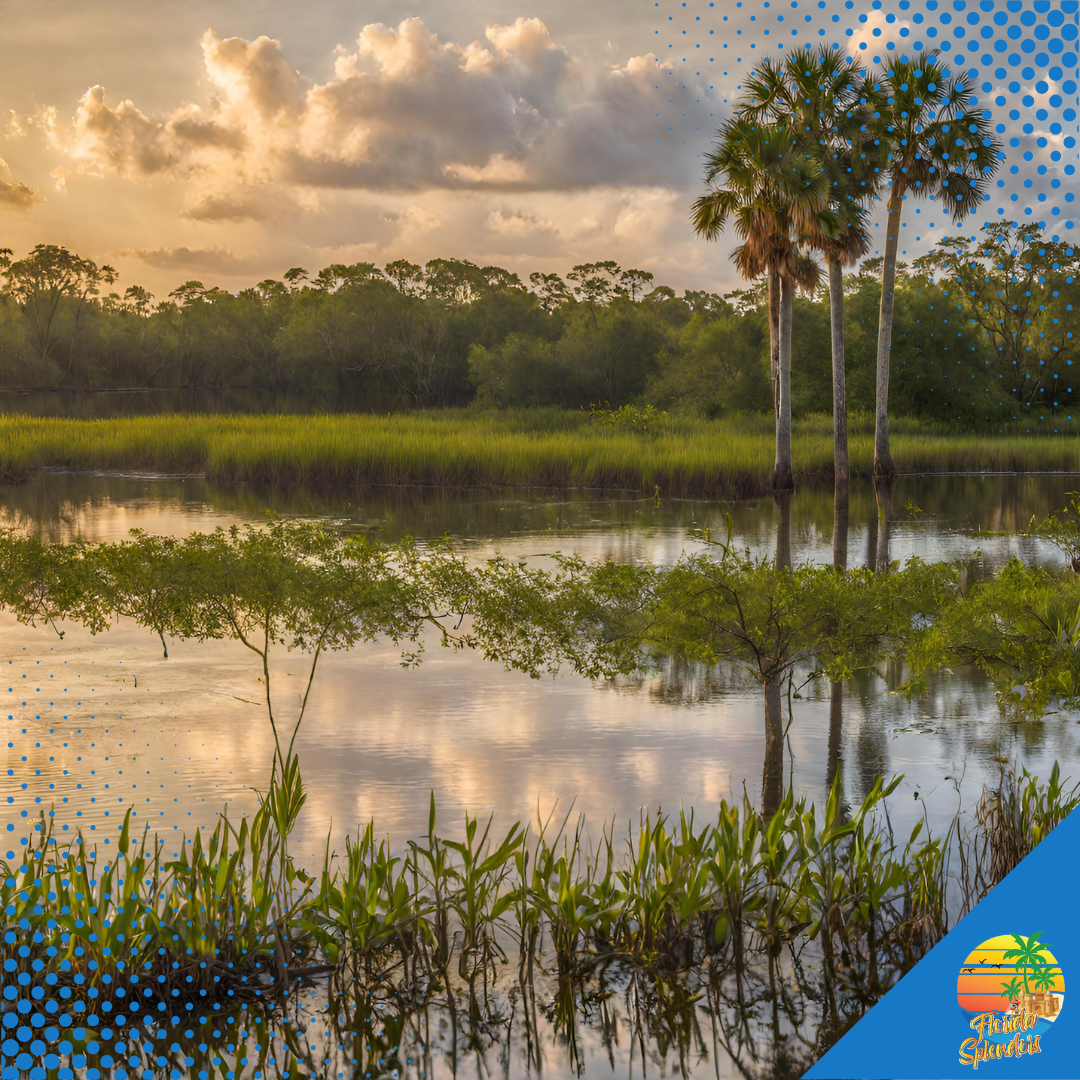
Key Takeaways
- Restoration efforts in the Everglades face challenges including funding deficits, project delays, and cost escalations, but receive significant boosts from public-private partnerships and federal and state support.
- Florida’s biodiversity is critically endangered due to urbanization and climate change, necessitating the implementation of conservation measures to protect numerous species and preserve the state’s natural resources tourism industry.
- The state’s environmental management efforts encompass combating invasive species, addressing pollution and water quality issues, and pursuing sustainable urban planning to mitigate habitat loss and support climate adaptation.

Environmental Issues in Florida: The Everglades Restoration Challenge
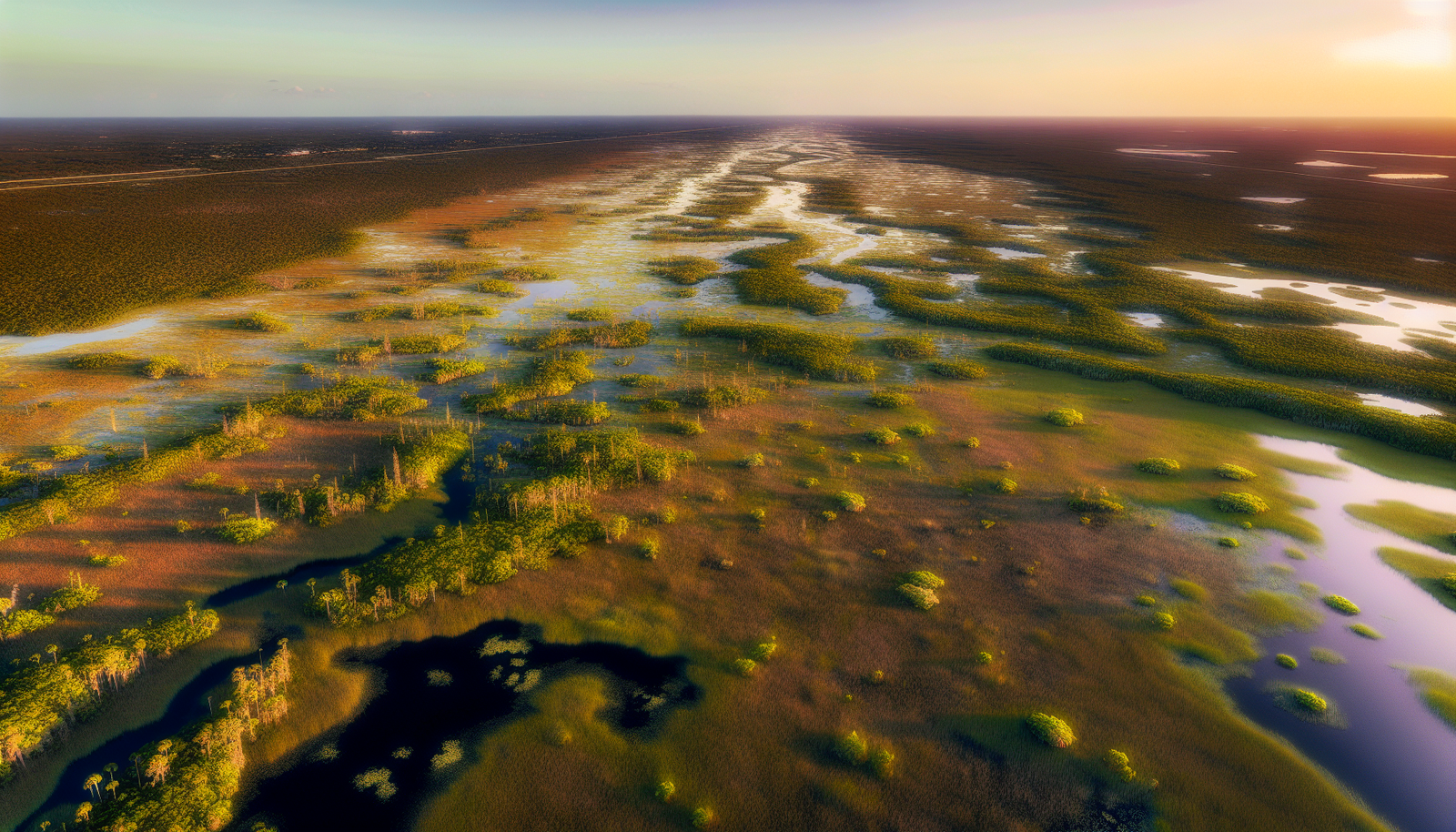
The Everglades, a significant wetland ecosystem, plays a pivotal role in maintaining the environmental balance in South Florida. Recognizing its importance, the Comprehensive Everglades Restoration Plan (CERP) was launched with the aim of restoring natural hydrologic conditions and removing barriers to water flow like roads and canals. However, the journey hasn’t been smooth. As we stand over halfway through the project timeline, less than one-third of the CERP components have been completed.
The challenges are multifaceted, ranging from funding shortfalls and conflicting reports to competition for water use and discrepancies between managing agencies. The escalation of costs from $8 billion to a staggering $23.2 billion hasn’t helped the cause either. Despite these hurdles, there have been silver linings. The commitment of over $1 billion from the Biden Administration and $546.6 million in Florida’s 2023 budget have given a much-needed boost to the restoration efforts.
Additionally, the restoration project has been significantly enhanced through public-private partnerships. Organizations like the Everglades Foundation and Friends of the Everglades have been steadfast in their advocacy for ecosystem recovery efforts. These concerted efforts offer a glimmer of hope for the Everglades, a testament to the tenacity of those committed to preserving Florida’s environment.
Threats to Florida’s Biodiversity
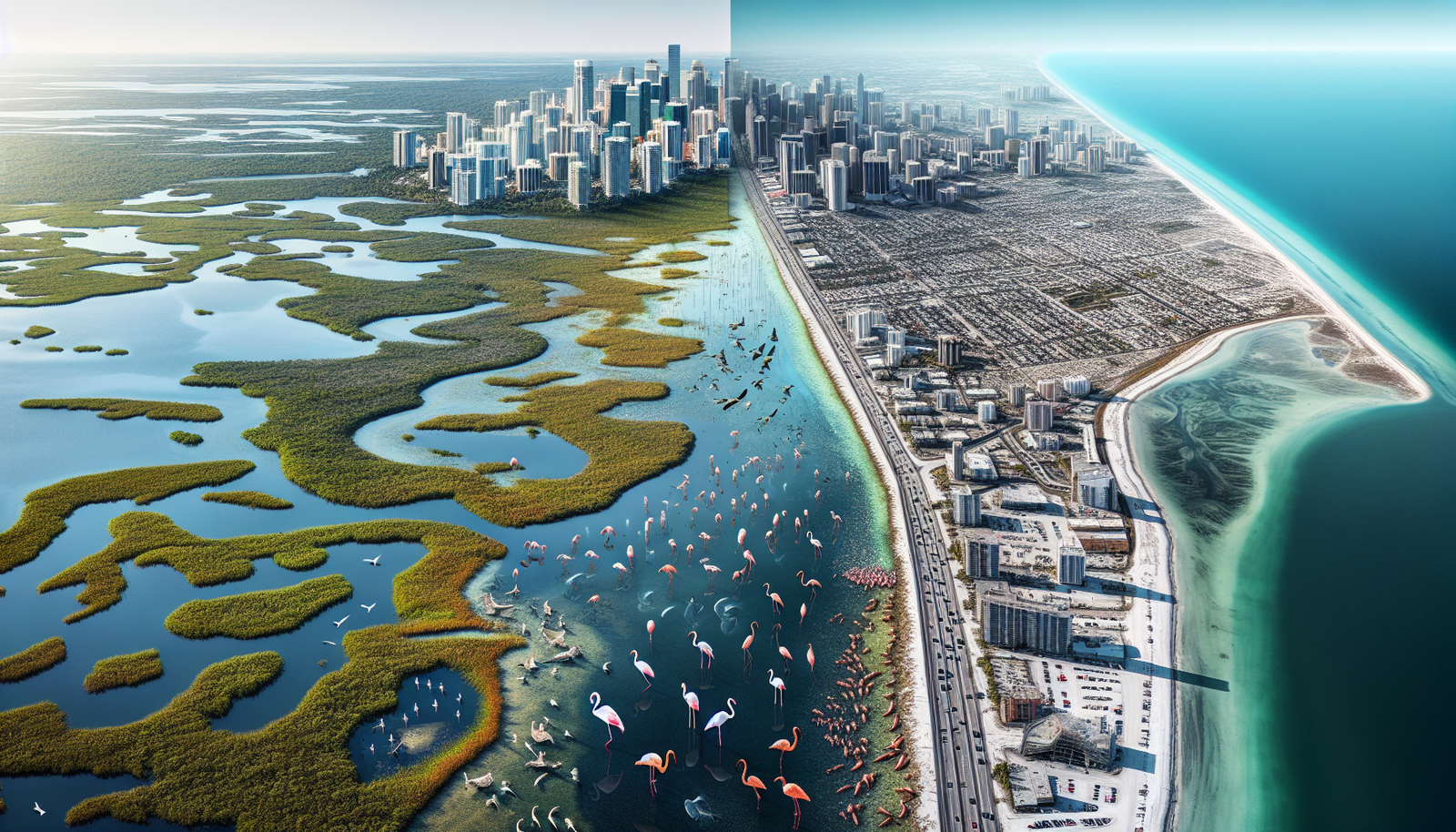
Florida’s rich biodiversity is under threat, with numerous species, including the Florida panther, American crocodile, and various bird species, on the brink of extinction. It’s not just the federally endangered species that are of concern. State-designated species, such as the sand skink, the Florida scrub-jay, and florida fish, are also under threat.
The FWC has responded by developing the Imperiled Species Management Plan, focusing on state-listed species without existing management plans or programs. It includes Species Conservation Measures and Permitting Guidelines to assist in the conservation and permitting of these species.
However, the challenges are manifold. Urbanization and rising sea levels have been significant contributors to the decline of Florida’s biodiversity. Not only do they pose a threat to the survival of numerous species, but they also impact natural resources tourism, a multi-billion dollar industry.
It’s clear that Florida’s biodiversity is hanging in the balance, with the need for concerted conservation efforts more pressing than ever.
Invasive Species: A Growing Concern
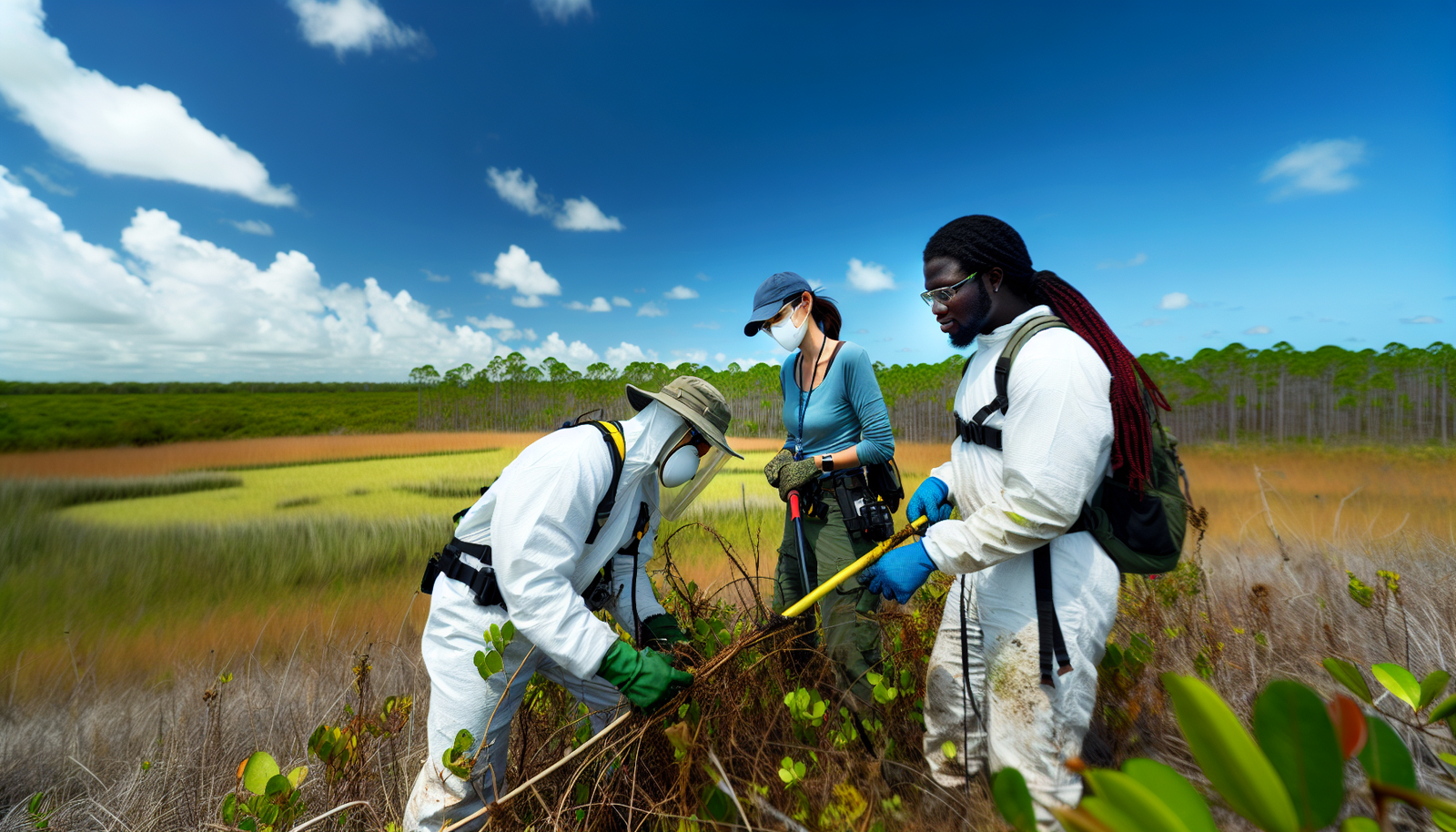
Florida is currently grappling with an invasive species crisis. The state’s hospitable climate and significant role in the reptile trade, coupled with its status as a major point of entry for imported plants, have led to an influx of non-native species. This has come with a hefty price tag, with the state shelling out approximately $100 million annually for the management of invasive plants alone.
Invasive Plant Species Menace
Hydrilla, an aquatic plant with a high water demand, poses a significant ecological challenge in Florida. This invasive plant is outcompeting native plants, disrupting aquatic ecosystems, and affecting biodiversity.
The prominence of Hydrilla in Florida’s waterways is a stark reminder of the broader issue of invasive plants and their ecological implications in the state. The battle against these green invaders is far from over, and the state needs to ramp up its efforts to safeguard its native flora.
Fauna Invaders and Their Impact
Non-native creatures such as the Argentine black and white tegu lizards are a significant threat to Florida’s ecosystems. These large lizards consume the eggs of ground-nesting birds and reptiles, contributing to the decline of native species.
The predation of eggs by non-native species like tegus can lead to population declines and imbalance in local ecological systems. This, coupled with the continuous disruption of the food web and habitat by invasive animals, poses risks to the sustainable future of Florida’s fauna and can even impact human health.
Pollution Pressures on Land and Sea
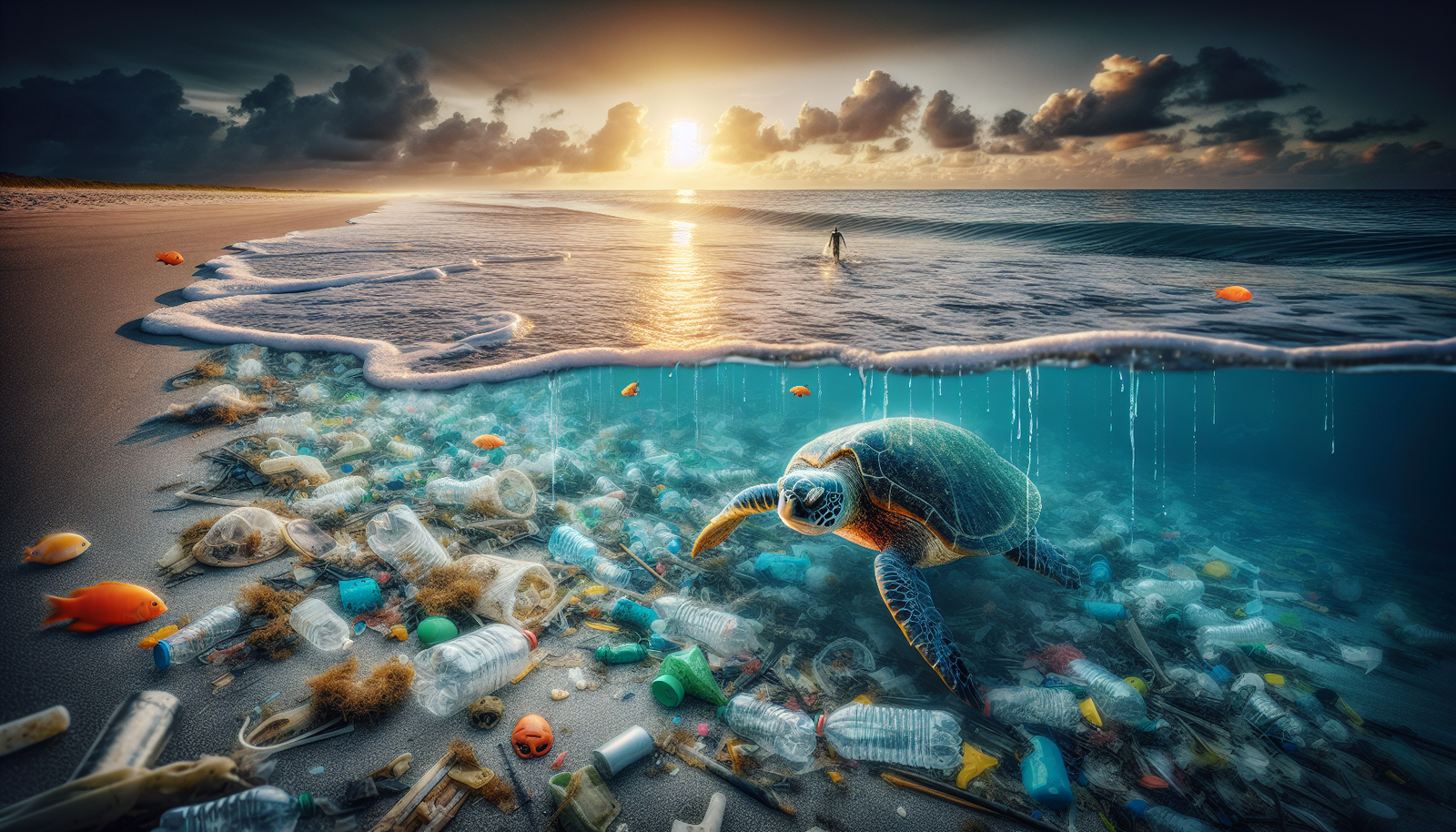
Marine pollution poses a substantial threat to Florida’s beaches, including West Palm Beach, a critical component of the state’s identity and economy. Evidence of this threat came to light during the International Coastal Cleanup, where volunteers in Florida collected over 14,000 plastic bags and 26,500 plastic straws, endangering marine life such as sea turtles.
In response to this growing issue, Miami conducted a comprehensive survey on plastic pollution in 2021. The data collected from this survey will aid in formulating policies and identifying measures to lessen plastic pollution inputs in the city. A key initiative in this regard is the operation of the Scavenger 2000 vessel by the City of Miami, which collects over 5,000 cubic feet of marine debris annually and injects oxygen into waterways, thereby improving water quality.
However, pollution isn’t just a problem on land or at sea. Invasive species, like the red lionfish, threaten native reef fish populations, with their poisonous spines posing a danger to humans as well. The fight against pollution, therefore, requires a multi-pronged approach, with local and state policies, as well as actions by organizations like Miami Waterkeeper, playing a pivotal role.
Climate Change and Sea Level Rise
Florida is profoundly affected by climate change. Some of the impacts include:
- Sea levels around the state have risen approximately 8 inches since 1950, with the rate of rise accelerating recently to 1 inch every 3 years.
- This rise in sea levels is causing an increase in high tide flooding.
- It is also severely impacting the state’s coastal infrastructure.
Current projections estimate a sea level rise between 1.31 to 1.38 feet by 2050 and between 3.25 to 3.44 feet by 2080 for Florida. These projections have serious implications, with over half the population in more than 100 towns and cities in Florida living on land below the critical elevation of 4 feet above high tide.
While these figures are alarming, it’s important to remember that the extent of sea level rise beyond 2050 will be influenced by factors such as greenhouse gas emissions, global temperatures, and ice sheet melt, all of which are connected to global warming. Therefore, rapid reductions in greenhouse gas emissions can significantly mitigate the extent of sea level rise.
However, the current levels of pollution have already committed the environment to future increases, necessitating prompt adaptation and preparedness strategies. The onus is now on us to rise to the challenge and work towards a sustainable future.
Habitat Loss and Urban Expansion

Significant habitat loss in Florida is due to urban expansion, characterized by sprawling residential housing and increased automobile dependency. With the state’s population projected to grow by 303,264 residents a year, the demand for living and working spaces is on a steady rise. This trend of urbanization practices is having a more significant impact on conservation targets compared to if sprawl reduction practices were implemented.
Urban development often encroaches on wildlife territories, leading to habitat fragmentation and loss of biodiversity. It’s clear that sustainable urban planning and climate adaptation strategies are essential to protect Florida’s natural resources, critical ecosystem functions, and services like coastal flood protection and storm surge risk reduction.
Water Quality Woes
Toxic algae blooms, phosphorus mining, and pollution are major challenges to water quality in Florida. The Central Everglades Planning Project (CEPP) is aimed at enhancing water flow into the Everglades and mitigating water flow to estuaries to curb harmful algal blooms. However, despite these efforts, the presence of toxic blue-green algal toxins in Lake Howell and Lake Jesup is a grim reminder of the challenges we face.
To address these concerns, Governor DeSantis has committed to tackling toxic algae blooms by:
- Instituting a group of scientists to focus on controlling these detrimental events
- Passing legislation including HB 7027 for septic system upgrades
- Passing legislation including HB 1379 to shield waterways from septic system damage.
However, pollution remains a significant issue, especially with phosphorus mining in Florida threatening to cause tailing pond breaches, contamination, and excessive runoff of phosphorus into nearby waters. Clearly, the battle for clean water in Florida is far from over.
Renewable Energy and Clean Technology
Florida is progressively advancing in the promotion of renewable energy and clean technology. The state has leveraged State Energy Program (SEP) funds to create a suite of energy-related programs that contribute to job creation, reduce dependence on oil, and foster economic growth through ‘green jobs’. Various initiatives like the Clean Energy Grant program, Clean Energy Investment Program, and the CNG Fleet Fueling Facilities program have been put forth to accelerate the adoption of energy-efficient and renewable technologies.

One of the key initiatives is the Sunshine State Buildings Initiative, which focuses on retrofitting state buildings for energy efficiency, including enhancements with solar PV systems and advanced HVAC controls. Other efforts like the Competitive Grants to Local Governments and the SunSmart Schools program support local energy efficiency developments and educational programs about solar energy.
Combining its natural resources, strategic location, and skilled workforce, Florida is emerging as a leader in clean technology, with industry sectors including solar energy and bioremediation. However, the challenge of urban sprawl, which results in higher per capita energy consumption compared to denser urban areas, underlines the necessity for sustainable urban planning in reducing energy use.
Community Action and Conservation Initiatives
Preserving Florida’s natural habitats and ecosystems is heavily reliant on community action and conservation initiatives. The Nature Conservancy in Florida manages about 55,159 acres, promoting sustainable community development, transforming marine management, and inspiring climate action. Its Center for Conservation Initiatives engages in education, research, and land stewardship to support conservation efforts.
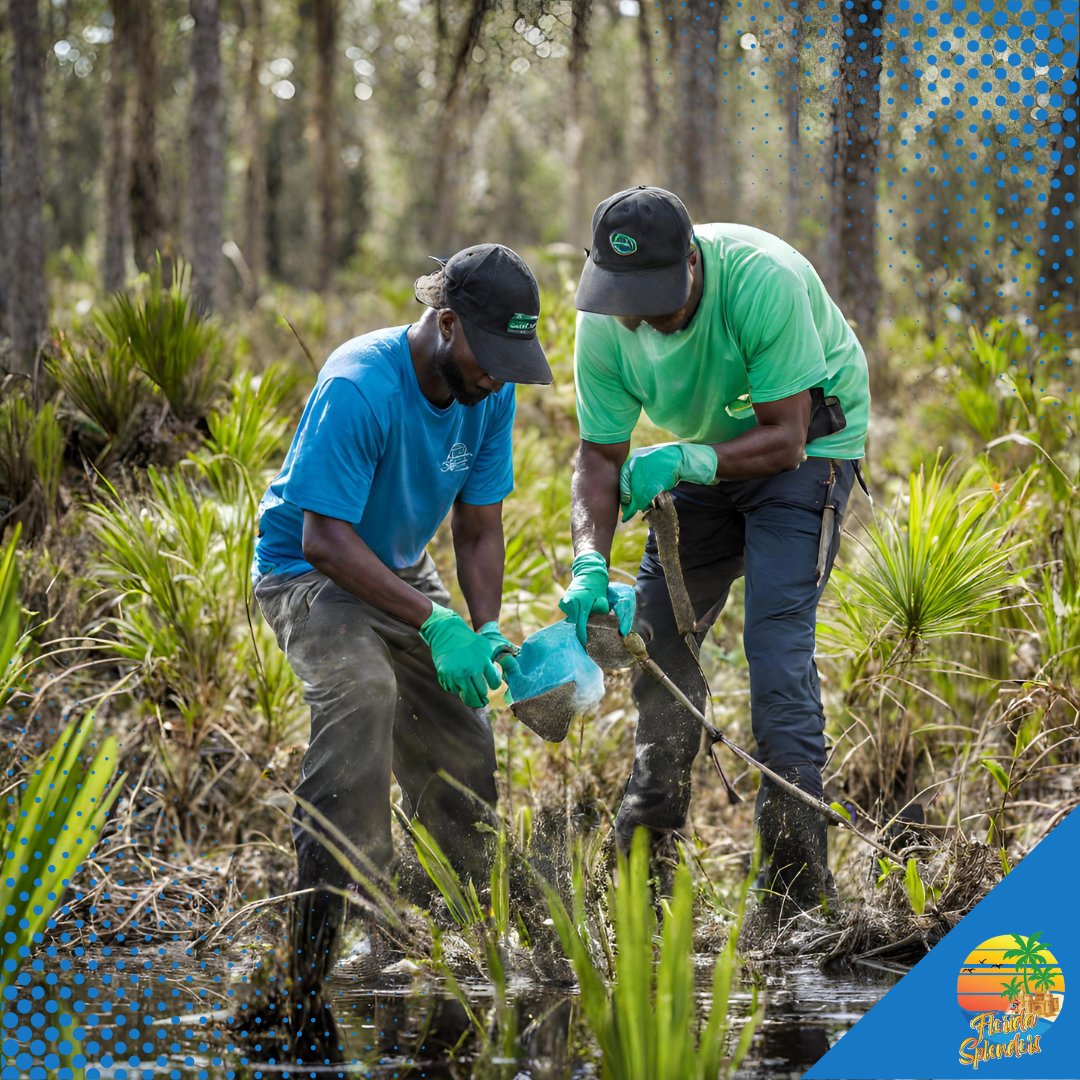
Volunteers are integral to these efforts. Their work ranges from maintaining native plant nurseries to caring for plants at Blowing Rocks Preserve. In addition to this, numerous conservation groups like:
- 1000 Friends of Florida
- Alachua Audubon Society
- Apalachicola Riverkeeper
- Audubon Florida
We work tirelessly to protect land, wildlife, and ecosystems specific to south and central Florida.
Collaborations also play a key role in conservation efforts. Some examples include:
- Conservation Florida, which collaborates with landowners to preserve the state’s natural and agricultural landscapes
- Advocates for Clean and Clear Waterways, which focuses on improving the environment through cleanup projects
- Tampa Bay Waterkeeper, which works to safeguard watersheds
These collaborations are essential for protecting and preserving our natural resources and natural ecosystems.
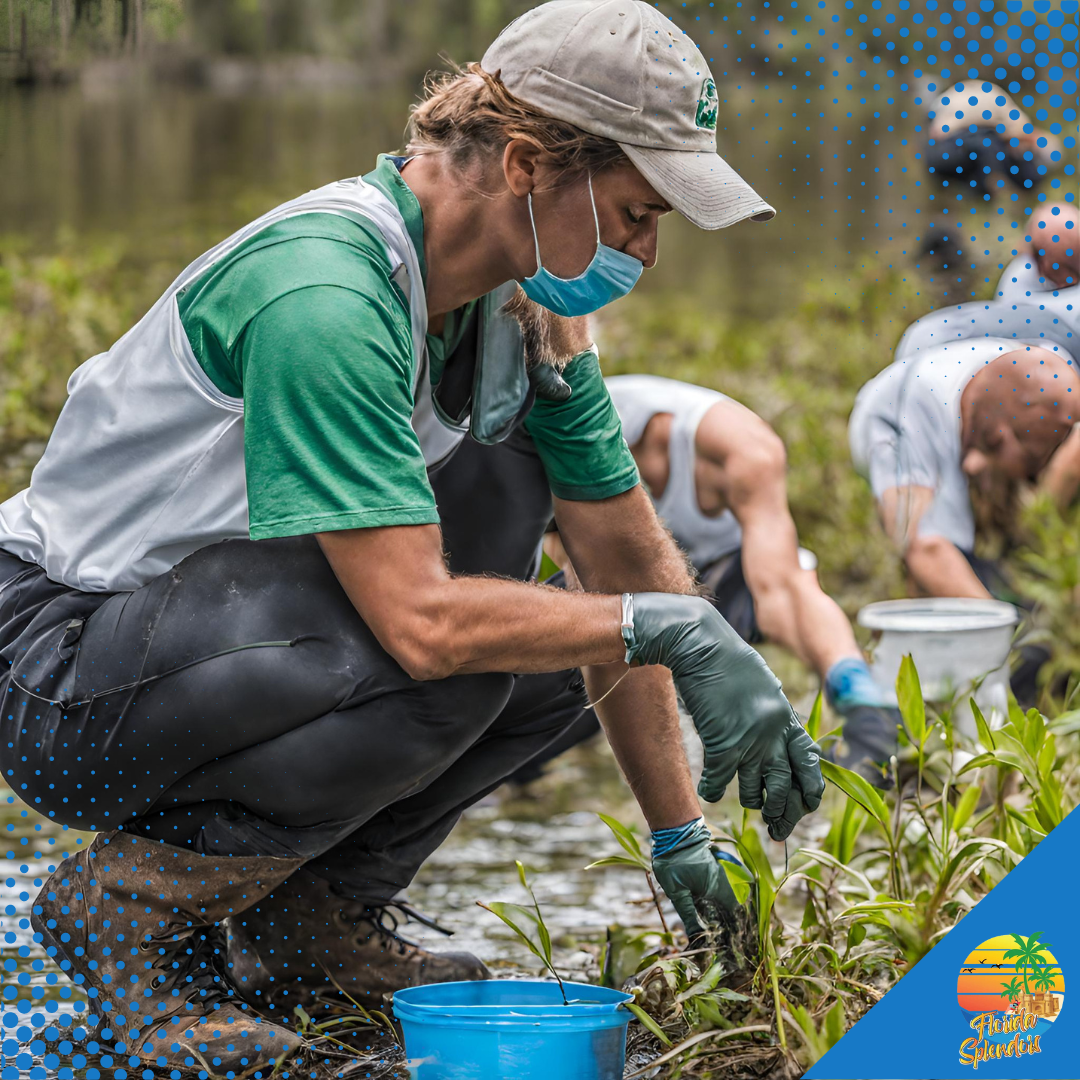
Clearly, the fight to conserve Florida’s natural habitats and ecosystems is a collective effort, and every hand makes a difference.
Environmental Challenges in Florida: Navigating Toward Sustainability
As we’ve seen, the environmental challenges that Florida faces are numerous and complex, from habitat loss and pollution to invasive species and climate change. However, hope is not lost. Efforts are underway to combat these issues and pave the way for a sustainable future, from restoration projects and policy initiatives to community action and advances in clean technology.
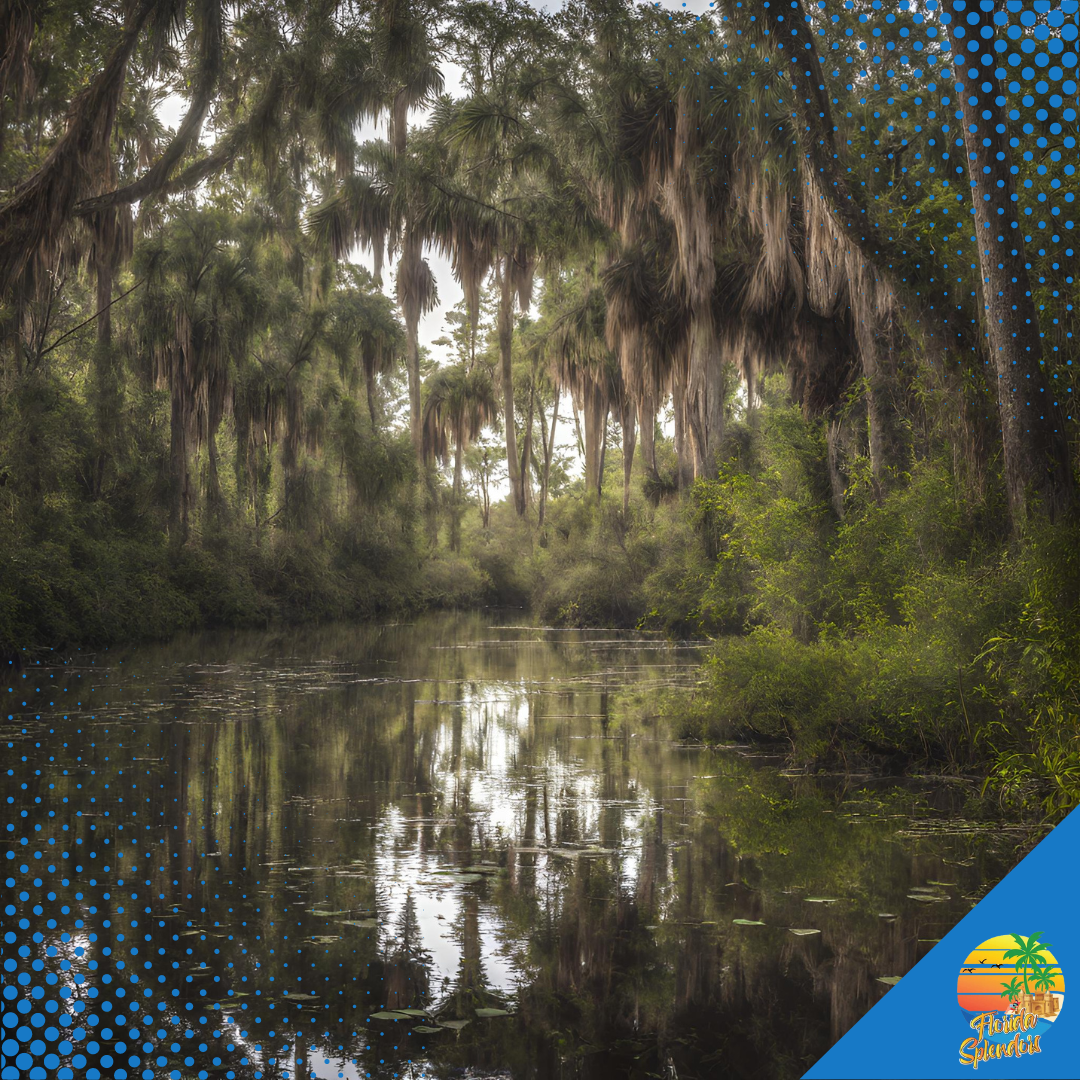
But, the journey is far from over. The road to a sustainable future for Florida is long and fraught with challenges. It calls for concerted efforts from all stakeholders, from policymakers and conservationists to businesses and communities. Together, we can ensure that Florida’s rich biodiversity and stunning landscapes are preserved for generations to come.
Frequently Asked Questions
What's Inside
What are the major threats to Florida's ecosystems?
The major threats to Florida’s ecosystems include sea level rise, changes in precipitation, air temperature variations, extreme weather events, and changes in carbon dioxide concentration. These climatic shifts are likely to impact the state’s habitats and ecosystems significantly.
What are the 3 biggest environmental issues?
The three biggest environmental issues are global warming and climate change, water pollution and ocean acidification, and loss of biodiversity. These issues have a significant impact on our environment and require urgent attention.
What is the environment like in Florida?
Florida has a diverse environment with tropical wet-dry and humid subtropical climates. It experiences frequent lightning, thunderstorms, tornadoes, fog, drought, and wildfires, making it a dynamic and occasionally challenging environment to live in.
Why is the Everglades Restoration Effort important?
The Everglades Restoration Effort is important because it aims to restore the natural hydrologic conditions and remove barriers to water flow in the Everglades, preserving this significant wetland ecosystem in Florida.
How is pollution affecting Florida's environment?
Pollution is a significant threat to Florida’s environment, causing harm to both land and sea through marine pollution and water quality issues from phosphorus mining. These impacts pose a serious risk to the state’s natural ecosystems.
Connect with Us for More: Explore Florida’s Wonders
Dive deeper into the world of Florida travel and nature conservation. Join our vibrant community on Facebook, Instagram, Pinterest, and Twitter. Engage with exciting content, discover product reviews, and share your passion for preserving Florida’s splendors. Together, let’s celebrate the beauty of the Sunshine State.

